Technology
Administration
THE
NATIONAL MEDAL OF TECHNOLOGY RECIPIENTS
|
![[2002]](/peth04/20041016183022im_/http://www.technology.gov/Graphics/H-2002.gif)
|
| |
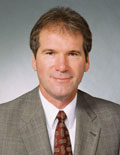
|
Calvin H. Carter
Director of Materials Technology
Cree, Inc.
Durham, NC
For his exceptional contributions to the development of silicon carbide wafers, leading to new industries in wide bandgap semiconductors and enabling other new industries in efficient blue, green, and white light, full-color displays, high-power solid-state microwave amplifiers, more efficient/compact power supplies, higher efficiency power distribution/transmission systems, and gemstones.
|
| |
|
| |
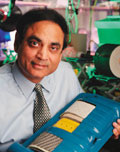
|
Haren S. Gandhi
Ford Technical Fellow
Ford Motor Company
Dearborn, MI
For his research, development, and commercialization of automotive exhaust catalyst technology, shaping the industry from its very beginning and continually pushing to improve the quality of the air we breathe. Also for leading the automotive industry in ensuring the judicious use of precious metals, including conservation measures such as recycling of spent converters and technological advances in precious metal utilization.
|
| |
|
| |
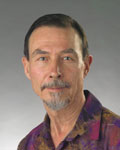
|
Carver A. Mead
Gordon and Betty Moore Professor of
Engineering and Applied Science Emeritus
California Institute of Technology
Pasadena, CA
For his pioneering contributions to microelectronics that include spearheading the development of tools and techniques for modern integrated-circuit design, laying the foundation for fabless semiconductor companies, catalyzing the electronic-design automation field, training generations of engineers that have made the United States the world leader in microelectronics technology, and founding more than twenty companies.
|
| |
|
| |
Team of John J. Mooney & Carl D. Keith: |
| |
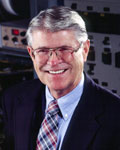
John J. Mooney
Engelhard Corporation (retired)
Wyckoff, NJ
|
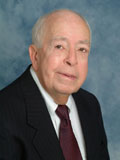
Carl D. Keith
Engelhard Corporation (retired)
Marco Island, FL
|
|
| |
For the invention, application to automobiles, and commercialization of the three-way catalytic converter. Through their persistent efforts, this technology is the key emission-control component in all new light-duty vehicles in the United States and throughout the world.
|
| |
|
| |
Team of Nick Holonyak, Jr., M. George Craford, and Russell Dean Dupuis |
| |
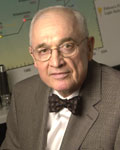
Nick Holonyak, Jr.
The Bardeen Professor in Electrical Engineering and Physics
University of Illinois at Urbana-Champaign
Urbana, IL
|
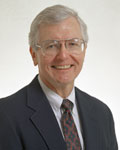
M. George Craford
Chief Technology Officer
Lumileds Lighting
San Jose, CA
|
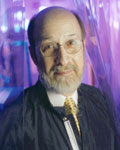
Russell Dean Dupuis
Professor Steve W. Chaddick Endowed Chair in Electo-Optics
and Georgia Research Alliance Eminent Scholar
Georgia Institute of Technology
Atlanta, GA
|
| |
For contributions to the development and commercialization of light-emitting diode (LED) technology, with applications to digital displays, consumer electronics, automotive lighting, traffic signals, and general illumination.
|
| |
|
| |

|
DuPont (Division Award)
Wilmington, DE
For policy and technology leadership in the phaseout and replacement of chlorofluorocarbons.
|
![[2001]](/peth04/20041016183022im_/http://www.technology.gov/Graphics/H-2001.gif)
|
| |
 |
| |
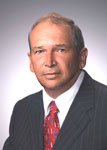
|
John A. Ewen
President
Catalyst Research Corporation
Houston, Texas
For his basic discoveries and inventions in the field of metallocene
catalysis which have revolutionized the production of polyethylene
and polypropylene plastics, thereby enhancing American leadership
and stimulating the growth of the entire industry.
|
| |
|
| |
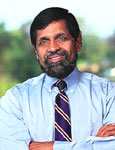
|
Arun N. Netravali
Chief Scientist, Lucent Technologies and Past President of Bell
Labs
Lucent Technologies--Bell Labs
Murray Hill, New Jersey
For his leadership in the field of communication systems; for
pioneering contributions that transformed TV from analog to digital,
enabling numerous integrated circuits, systems and services in
broadcast TV, CATV, DBS, HDTV, and multimedia over the Internet;
and for technical expertise and leadership, which have kept Bell
Labs at the forefront in communications technology.
|
| |
|
| |
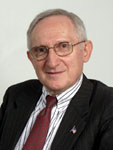
|
Sidney Pestka, M.D.
University of Medicine & Dentistry of New Jersey
Robert Wood Johnson Medical School
Piscataway, New Jersey
For pioneering achievements that led to the development of
the biotechnology industry, to the first recombinant interferons
for the therapy of cancers, leukemias, viral diseases such as
hepatitis B and C, and multiple sclerosis, to fundamental technologies
leading to other biotherapeutics; and for basic scientific discoveries
in chemistry, biochemistry, genetic engineering and molecular
biology from protein biosynthesis to receptors and cell signaling.”
|
| |
|
| |
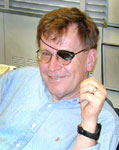
|
Jerry M. Woodall
Yale University
New Haven, Connecticut
For his pioneeriong role in the research and development of
compound semiconductor materials and devices; for the invention
and development of technologically and commercially important
compound semiconductor heterojunction materials, processes, and
related devices, such as light-emitting diodes, lasers, ultra-fast
transistors, and solar cells.
|
| |
|
| |
The Dow Chemical Company
Midland, Michigan

For leadership in science and technology, for the vision to
create great science and innovative technology in the chemical
industry, and for the positive impact that commercialization
of this technology has had on society.
|
| |
 |
![[2000]](/peth04/20041016183022im_/http://www.technology.gov/Graphics/H-2000.gif)
|
| |
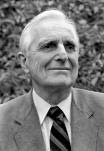
|
Douglas C. Engelbart
Director, Bootstrap Institute
For creating the foundations of personal computing including continuous,
real-time interaction based on cathode-ray tube displays and the
mouse, hypertext linking, text editing, on-line journals, shared-screen
teleconferencing, and remote collaborative work. More than any
other person, he created the personal computing component of the
computer revolution.
|
| |
|
| |
 |
Dean Kamen
Medical Entrepreneur
DEKA Research &
Development Corp.
For inventions that have advanced medical care worldwide, and for
innovative and imaginative leadership in awakening America to the
excitement of science and technology. At age 49 this self-made
inventor has founded three medical device companies and earned
more than 100 U.S. and foreign patents. And he still has found
time to start and run a national youth organization and robotics
competition to catch young imaginations and start their inventive
potential humming.
|
| |
|
| |
Corning Team |
| |

Donald B. Keck
Division VP and
Technology Director, Optical Physics Technology Group,
Corning, Inc.
|

Robert D. Maurer
Corning Research Fellow (Retired)
|

Peter C. Schultz
President
Heraeus Amersil, Inc.
|
| |
In 1970, Drs. Donald Keck, Robert Maurer, and Peter Schultz
teamed up at the Corning Glass Corporation to co-invent low-loss
fiber optic cable. Their invention has enabled the telecommunications
revolution, rapidly transformed our society, the way we work,
learn and live - and our expectations for the future. It is the
basis for one of the largest, most dynamic industries in the
world today.
|
| |
|
| |
The IBM Corporation (Division Award)
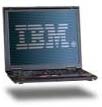
For 40 years of innovations in the technology of hard disk drives
and information storage products. IBM is widely recognized as the
world's leader in basic data storage technologies, and holds over
2000 US patents. IBM is a top innovator of component technologies-such
as flying magnetic heads (thin film heads, and magneto resistive
heads), film disks, head accessing systems, digital signal processing
and coding, as well as innovative hard disk drive systems. Some specific
IBM inventions are used in every modern hard drive today: thin film
inductive heads, MR and GMR heads, rotary actuators, sector servos
and advanced disk designs. These advances outran foreign hard disk
technology and enabled the US industry to maintain the lead it holds
today.
|
|
|
| |
 |
![[1999]](/peth04/20041016183022im_/http://www.technology.gov/Graphics/H-1999.gif)
|
| |
![[G. Culler image]](/peth04/20041016183022im_/http://www.technology.gov/Medal/Graphics/culler.jpg) Glen
Culler, Chief Scientist and Chairman of the Board (retired),
Culler Scientific Systems Corporation Glen
Culler, Chief Scientist and Chairman of the Board (retired),
Culler Scientific Systems Corporation
For pioneering innovations in multiple branches of computing, including
early efforts in digital speech processing, invention of the first
on-line system for interactive graphical mathematics computing and
pioneering work on the ARPAnet.
![[R. Kurzweil image]](/peth04/20041016183022im_/http://www.technology.gov/Medal/Graphics/kurzweil.jpg) Raymond
Kurzweil, Founder, Chairman and Chief Executive
Officer, Kurzweil Technologies, Inc. Raymond
Kurzweil, Founder, Chairman and Chief Executive
Officer, Kurzweil Technologies, Inc.
For pioneering and innovative achievements in computer science
such as voice recognition, which have overcome many barriers and
enriched the lives of disabled persons and all Americans.
![[R. Swanson image]](/peth04/20041016183022im_/http://www.technology.gov/Medal/Graphics/swann.jpg) Robert
Swanson (Posthumous Award), Chairman of K&E; Management,
Ltd. Robert
Swanson (Posthumous Award), Chairman of K&E; Management,
Ltd.
For his foresight and leadership in recognizing the commercial
promise of recombinant DNA technology and his seminal role in the
establishment and development of the biotechnology industry.
Robert Taylor (retired)
For visionary leadership in the development of modern computing
technology, including computer networks, the personal computer
and the graphical user interface.
![[Symbol Technologies image]](/peth04/20041016183022im_/http://www.technology.gov/Medal/Graphics/symbol.jpg) Symbol
Technologies, Inc. For creating the
global market for laser bar code scanning and
for technical innovation and practical application
of mobile computing and wireless local area
network technologies. Symbol
Technologies, Inc. For creating the
global market for laser bar code scanning and
for technical innovation and practical application
of mobile computing and wireless local area
network technologies.
|
|
|
| |
 |
![[1998]](/peth04/20041016183022im_/http://www.technology.gov/Graphics/H-1998.gif)
|
| |
![[D. Cooley image]](/peth04/20041016183022im_/http://www.technology.gov/Medal/Graphics/Cooly2.jpg) Denton
A. Cooley, M.D. Denton
A. Cooley, M.D.
Texas Heart Institute, Texas Medical Center
For his inspirational skill, leadership, and technical
accomplishments during six decades practicing cardiovascular surgery,
including performing the first successful human heart transplant
in the United States and the world’s first implantation of an
artificial heart in man as a bridge to heart transplantation; and
for founding the Texas Heart Institute, which has served more heart
patients than any other institution in the world.
|
| |
Robert Fraley,
Robert Horsch, Ernest Jaworski, Stephen Rogers, Monsanto Corp.
For their pioneering achievements
in plant biology and agricultural biotechnology, and for global
leadership in the development and commercialization of genetically
modified crops to enhance agricultural productivity and sustainability. |
| |
![[R. Fraley image]](/peth04/20041016183022im_/http://www.technology.gov/Medal/Graphics/FRALEY.jpg) |
![[R. HORSCH image]](/peth04/20041016183022im_/http://www.technology.gov/Medal/Graphics/HORSCH.jpg) |
![[E. JAWORSKI image]](/peth04/20041016183022im_/http://www.technology.gov/Medal/Graphics/JAWORSKI.jpg) |
![[S. ROGERS image]](/peth04/20041016183022im_/http://www.technology.gov/Medal/Graphics/ROGERS.jpg) |
| |
![[K. THOMPSON image]](/peth04/20041016183022im_/http://www.technology.gov/Medal/Graphics/THOMPSON.jpg) |
Kenneth L. Thompson, Bell Laboratories and Dennis
M. Ritchie, Lucent Technologies
For their invention of UNIX® operating system and the C programming
language, which together have led to enormous growth of an entire
industry, thereby enhancing American leadership in the Information
Age.
|
![[D. RITCHIE image]](/peth04/20041016183022im_/http://www.technology.gov/Medal/Graphics/RITCHIE.jpg) |
| |
Biogen,
Inc.
For its
leadership in applying breakthroughs in
biology to the development of lifesaving
and life-enhancing pharmaceutical products
designed to treat large, previously underserved
patient populations throughout the world,
including development of hepatitis B vaccines,
the first vaccines using recominant DNA
technology.
|
| |
Bristol-Myers
Squibb Company
For extending and enhancing
human life through innovative pharmaceutical
research and development, and for redefining
the science of clinical study through groundbreaking
and hugely complex clinical trials that are
recognized models in the industry. |
| |
The National Medal of Technology is the nation's highest honor
for technological innovation. Administered by the Commerce
Department's Office of Technology Policy, the Medal recognizes
American innovators whose intellect, creativity, and brilliance
in spanning the continuum from discovery to market have made
profound and lasting contributions to the nation's economy
and quality of life. The President of the United States first
presented this prestigious award in 1985.
|
|
|
| |
 |
![[1997]](/peth04/20041016183022im_/http://www.technology.gov/Graphics/H-1997.gif) |
| |
Norman R. Augustine
Lockheed Martin Corporation
For visionary leadership of the aerospace industry, for championing
technical and managerial solutions to the many challenges in civil
and defense systems, and for contributions to the United States world
preeminence in aerospace.
Ray M. Dolby
Dolby Laboratories Inc.
For inventing technologies that have dramatically improved sound
recording and reproduction, fostering their adoption worldwide,
and maintaining a vision that for more than 30 years has kept the
world listening.
Robert S. Ledley
Georgetown University Medical Center
For pioneering contributions to biomedical computing and engineering,
including inventing the whole-body CT scanner which revolutionized
the practice of radiology, and for his role in developing automated
chromosome analysis for prenatal diagnosis of birth defects.
Vinton Gray Cerf, MCI and Robert E. Kahn, Corporation for National
Research Initiatives
For creating and sustaining development of Internet Protocols and
continuing to provide leadership in the emerging industry of internetworking.
|
|
|
| |
 |
![[1996]](/peth04/20041016183022im_/http://www.technology.gov/Graphics/H-1996.gif) |
| |
Ronald H. Brown (Posthumous Award)
U.S. Secretary of Commerce, 1993-1996
For his vision of American global technological leadership, his tireless
advocacy of research and development for economic growth and higher
living standards for all, and his energetic efforts to champion the
innovative spirit of the American people.
Johnson & Johnson
For a century of continuous innovation in research, development
and commercialization of products that are critical in the management
of disease, improvement of quality of life, reduction of health
care costs and fostering of U.S. global competitiveness.
Charles H. Kaman, Kaman Corporation
For his pioneering work in the field of rotary-wing flight, his
unique capacity for successful technology transfer from defense
to commercial use, and for fostering a corporate environment
in which diverse technological achievements flourish and new
businesses are created.
Stephanie L. Kwolek, DuPont Company (Ret.)
For her contributions to the discovery, development and liquid
crytstal processing of high-performance aramid fibers which provide
new products worldwide to save lives and benefit humankind.
James C. Morgan, Applied Materials, Inc.
For his leadership of 20 years developing the U.S. semiconductor
manufacturing equipment industry, and for his vision in building
Applied Materials, Inc. into the leading equipment company in
the world, a major exporter and a global technology pioneer which
helps enable Information Age technologies for the benefit of
society.
Peter H. Rose, Krytek Corporation
For his vision and outstanding leadership in the development and
commercialization of ion implantation products that make possible
the manufacture of modern semiconductors; and for his success
in establishing and maintaining U.S. global leadership in the
implantation equipment industry.
|
|
|
| |
 |
![[1995]](/peth04/20041016183022im_/http://www.technology.gov/Graphics/H-1995.gif) |
| |
Edward R. McCracken, Silicon Graphics, Inc.
For his groundbreaking work in the areas of affordable 3D visual
computing and super computing technologies; and for his technical
and leadership skills in building Silicon Graphics, Inc., into
a global advanced technology company.
IBM Team: Praveen Chaudhari, IBM TJ Watson Research Center,
Jerome J. Cuomo, North Carolina State University (Formerly
with IBM) and Richard J. Gambino, State University of New York
at Stony Brook (Formerly with IBM)
For the discovery and development of a new class of materials-the
amorphous magnetic materials-that are the basis of erasable, read-write,
optical storage technology, now the foundation of the worldwide
magnetic-optic disk industry.
The Proctor & Gamble Company
For creating, developing and applying advanced technologies to
consumer products which have strengthened the American economy
while helping to improve the quality of life for millions of
consumers worldwide.
3M
For its many innovations over decades, producing thousands of successfully
commercialized products, from the unique optical film that revolutionized
the design of laptop computer screens to breakthrough technologies
that make possible the ubiquitous "Post-It¨ Repositionable
Notes. For aggressive international expansion producing nearly
half of 3M's $14 billion in sales, including $1.5 billion in
U.S. exports. And for creating 86,000 jobs worldwide, including
48,000 in the U.S.
Sam B. Williams, Williams International
For his unequaled achievements as a gifted inventor, tenacious
entrepreneur, risk-taker and engineering genius in making the
USA number one in small gas turbine engine technology and competitiveness,
and for his leadership and vision in revitalizing the U.S. general
aviation business jet and trainer jet aircraft industry.
Alejandro Zaffaroni, Alza Corporation, Affymax N. V.
For his pioneering accomplishments in the field of drug discovery,
commercializing novel technologies for drug discovery and drug
delivery; for his visionary leadership in combining diverse disciplines
to develop technologies and products to provide a new dimension
to individual health and the changing needs of the pharmaceutical
industry. |
|
|
| |
 |
![[1994]](/peth04/20041016183022im_/http://www.technology.gov/Graphics/H-1994.gif) |
| |
AMGEN
For its leadership in developing innovative and important commercial
therapeutics based on advances in cellular and molecular biology
for delivery to critically ill patients throughout the world.
Corning Inc.
For a series of technological innovations yielding a wide range
of extraordinary products, from pollution control materials to
space shuttle windows. For life changing and life enhancing inventions
which made possible entire new industries - lighting, television
and optical communications.
Joel S. Engel, Ameritech, Inc. and Richard Frenkiel, AT&T
Consumer Products
For his fundamental contributions to the theory, design and development
of cellular mobile communications systems.
H. Joseph Gerber, Gerber Scientific, Inc.
For his past and continuing technical leadership in the invention,
development and commercialization of manufacturing automation
systems for a wide variety of industries - most notably apparel
- which have made those industries more efficient and cost effective
in today's worldwide competitive environment.
Irwin M. Jacobs, Qualcomm, Inc.
For his vision, innovation and leadership in the field of digital
wireless communications over the past 25 years; and for his development
of Code Division Multiple Access as a commercial technology adopted
as a U.S. digital cellular standard providing increased capacity,
quality and services and greatly enhancing the U.S. position
in the international telecommunications marketplace. |
|
|
| |
 |
![[1993]](/peth04/20041016183022im_/http://www.technology.gov/Graphics/H-1993.gif) |
| |
Amos E. Joel, Jr., AT&T Bell Laboratories
For his vision, inventiveness and perseverance in introducing technological
advances in telecommunications, particularly in switching, that
have had a major impact on the evolution of the telecommunications
industry in the U.S. and worldwide.
William H. Joyce, Union Carbide Corp.
For his vision and entrepreneurial talents, along with his technology
and business leadership, in creating and commercializing a process
(UNIPOL) that revolutionized the production of plastics.
George Kozmetsky, IC2 Institute
For his commercialization of various technologies through the establishment
and development of over one hundred technology-based companies
that employ tens of thousands of people and export over one billion
dollars worldwide.
George Levitt, Du Pont Corp. and Marinus Los, American Cyanamid
Corp.
For their independent contribution to the discovery and commercialization
of environmentally friendly herbicides to help ensure an abundant
food supply for a growing world population.
Hans W. Liepmann, Cal Tech University
For his outstanding research contributions to the field of fluid
mechanics and for his devotion for over 40 years to the education
of the world's leaders in aeronautical engineering.
William D. Manly, Martin Marietta Energy Systems and ORNL
For his outstanding success in the development and processing of
advanced high-temperature and high-performance materials, and
the transfer of this technology to a variety of American industries.
Kenneth H. Olsen, Digital Equipment Corp.
For his contributions to the development and use of computer technology;
and for his entrepreneurial contribution to American business.
Walter L. Robb, General Electric Corp.
For his leadership in the development and commercialization of
new medical imaging technologies and related manufacturing initiatives
both of which have improved people's health and contributed to
U.S. global leadership in a high-technology industry. |
|
|
| |
 |
![[1992]](/peth04/20041016183022im_/http://www.technology.gov/Graphics/H-1992.gif) |
| |
William H. Gates, III., Microsoft Corp.
For his early vision of universal computing at home and in the office;
for his technical and business management skills in creating a
world-wide technology company; and for his contribution to the
development of the personal computer industry.
W. Lincoln Hawkins, AT&T Bell Laboratories
For his invention and contribution to the commercialization of
long-lived plastic coatings for communications cable that has
saved billions of dollars for telephone companies around the
world; and for his leadership in encouraging minorities to pursue
science and engineering careers.
Joseph M. Juran, Juran Institute
For his lifetime work of providing the key principles and methods
by which enterprises manage the quality of their products and
processes, enhancing their ability to compete in the global marketplace.
Chaarles D. Kelman, M.D., P.C.
For his innovations in cataract surgical technology resulting in
reduced rehabilitation time for millions of Americans, significant
savings, and the creation of a new industry.
Merck & Co., Inc.
For sustained innovation focusing on the discovery, development
and worldwide commercialization of superior human and animal
health products while maintaining proper concern for the environment.
Delbert H. Meyer, AMOCO Chemical Co.
For his discovery of the process for making purified terephthalic
acid (PTA), the key building block in the production of polyester,
which resulted in greatly accelerated growth of polyester products
such as fabrics, recording tape, tire cord, food packaging and
bottles.
Paul B. Weisz, University of Pennsylvania and MOBIL Corp.
For his basic discoveries and management in the field of zeolite
catalysis, in conjunction with his colleagues at Mobil Corporation,
leading to chemical and petroleum technologies now producing
products valued at billions of dollars per year.
N. Joseph Woodland, International Business Machines Corp.
For his invention and contribution to the commercialization of
bar code technology which improved productivity in every industrial
sector and gave rise to the bar code industry. |
|
|
| |
 |
![[1991]](/peth04/20041016183022im_/http://www.technology.gov/Graphics/H-1991.gif) |
| |
Stephen D. Bechtel, Jr. Bechtel Group, Inc.
For his outstanding leadership in the engineering profession with
special recognition for his contributions to the development and
application of advanced management techniques to world-class industrial
projects.
C. Gordon Bell, Stardent Computers
For his continuing intellectual and industrial achievements in
the field of computer design; and for his leading role in establishing
cost-effective, powerful computers which serve as a significant
tool for engineering, science and industry.
Geoffrey Boothroyd and Peter Dewhurst, University of Rhode
Island
For their concept, development and commercialization of Design
for Manufacture and Assembly (DFMA), which has dramatically reduced
costs, improved product quality and enhanced the competitiveness
of major U.S. manufacturers.
John Cocke, International Business Machines Corp.
For his development and implementation of Reduced Instruction Set
Computer (RISC) architecture that significantly increased the
speed and efficiency of computers, thereby enhancing U.S. technological
competitiveness.
Carl Djerassi, Stanford University
For his broad technological contributions to solving environmental
problems; and for his initiatives in developing novel, practical
approaches to insect control products that are biodegradable
and harmless.
James J. Duderstadt, University of Michigan
For his excellence in the development and implementation of strategies
for engineering education; and for his successes in bringing
women and minorities into the Nation's technological work force.
Robert W. Galvin, Motorola, Inc.
For advancement of the American electronics industry through continuous
technological innovation, establishing Motorola as a world-class
electronics manufacturer.
Grace Murray Hopper, U.S. Navy (RET.)/Digital Equipment Corp.
For her pioneering accomplishments in the development of computer
programming languages that simplified computer technology and
opened the door to a significantly larger universe of users.
F. Kenneth Iverson, Nucor, Inc.
For his concept of producing steel in minimills using revolutionary
slabcasting technology that has revitalized the American steel
industry.
Frederick M. Jones and Joseph A. Numero, Thermo King, a subsidiary
of Westinghouse Electric Corp.
For their development of refrigeration technology for trucks, trailers,
boxcars, ships and planes which revolutionized the preservation
and distribution of food and other perishables; and for their development
of a worldwide sales and service network.
The Pegasus Team: Orbital Sciences Corporation and Hercules,
Inc., David W. Thompson, Antonio L. Elias, David S. Hollingsworth
and Robert R. Lovell
For their invention, development, and production of the Pegasus
rocket, the world's first privately developed space launch vehicle,
that has opened the door to greater commercial, scientific and
defense uses.
Charles R. Reed, General Electric Co.
For his management risk-taking in continuous innovation leading
General Electric Company to world-class production of advanced
engineering materials.
John Paul Stapp, U.S. Air Force (Ret.)/Space Center
For his research on the effects of mechanical force on living tissues
leading to safety developments in crash protection technology
for automobiles, aircraft, trains, manned space flight and other
modes of transportation. |
|
|
| |
 |
![[1990]](/peth04/20041016183022im_/http://www.technology.gov/Graphics/H-1990.gif) |
| |
John V. Atanasoff, Iowa State University (Ret.)
For his invention of the electronic digital computer and for contributions
toward the development of a technically trained U.S. work force.
Marvin Camras, Illinois Institute of Technology
For the development and commercialization of magnetic recording
resulting in the creation of a new industry with over 125 licenses
producing products such as audio and video cassettes, broadcast
sound video, tapes and discs for computer memories, and magnetic
sound for motion pictures.
The Du Pont Company
For pioneering the development and commercialization of high-performance
man-made polymers such as nylon, neoprene rubber, "Teflon" fluorocarbon
resin, and a wide spectrum of new fibers, films, and engineering
plastics which have strengthened America's global competitiveness
and benefited humankind.
Donald N. Frey, Northwestern University
For his management of a wide range of commercial applications of
new technology while serving as a senior executive in different
industries; and for subsequent teaching and research, as a Professor
of Industrial Engineering and Management Science, on the principles
of technology commercialization.
Fred W. Garry, General Electric Corp.
For the design, manufacture and commercialization of high performance
jet engines that lead the world in performance, efficiency, life-cycle
cost, and minimal environmental impact; and for his leadership
in establishing a technical information exchange and manufacturing
alliances assuring the United States continuing global leadership
in both commercial and military aircraft engines.
Wilson Greatbach, Wilson Greatbach, Inc.
For invention, development and introduction into clinical usage
of the implantable cardiac pacemaker resulting in saving over
two million lives. This subsequently led to the development and
commercialization of lithium batteries which greatly enhanced
longevity and reliability of pacemakers and implantable devices.
Jack St. Clair Kilby, Jack Kilby Co.
For his invention and contributions to the commercialization of
the integrated circuit and the silicon thermal print-head; for
his contributions to the development of the first computer using
integrated circuits; and for the invention of the hand-held calculator,
and gate array.
John S. Mayo, AT&T Bell Laboratories
For providing the technological foundation for information-age
communications, and for overseeing the conversion of the national
switched telephone network from analog to a digital-based technology
for virtually all long-distance calls both nationwide and between
continents.
Gordon E. Moore, Intel Corp.
For his seminal leadership in bringing American industry the two
major postwar innovations in microelectronics - large-scale integrated
memory and the microprocessor - that have fueled the information
revolution.
David B. Pall, Pall Corporation
For patenting and commercializing over 100 filtration and other
fluid clarification products which have contributed significantly
to society in safety of flight, upgrading of industrial products
and processes and improved safety of blood transfusions; and
for building Pall Corporation into a global company with 60 percent
of sales outside the United States, primarily in Europe and Japan.
Chauncey Starr, Electric Power Research Institute
For his original contributions to energy production and policy;
for pioneering in nuclear power; for developing risk assessment
and risk management concepts; for organizing the Electric Power
Research Institute, a consortium; for leadership in engineering
education and contributions to a technically trained U.S. work
force. |
|
|
| |
 |
![[1989]](/peth04/20041016183022im_/http://www.technology.gov/Graphics/H-1989.gif) |
| |
Jay W. Forrester, Massachusetts Institute of Technology
and Robert R. Everett, The MITRE Corp.
For their creative work in developing the technologies and applying
computers to real-time applications. Their important contributions
proved vital to national and free world defense and opened a new
era of world business.
Helen Edwards, Richard A. Lundy, J. Richie Orr and Alvin Tollestrup,
Fermi National Accelerator Laboratory
For their contributions to the design, construction and initial
operation of the TEVATRON particle accelerator. The scientific
instrument was designed to explore the fundamental properties of
matter. The innovative design and successful operation of the TEVATRON
has been crucial to the design of the Superconducting Super Collider,
the planned next generation particle accelerator.
Herbert W. Boyer, University of California, San Francisco and
Stanley N. Cohen, Stanford University Medical Center
For their fundamental invention of gene splicing techniques allowing
replication in quantity of biomedically important new products,
and beneficially transformed plant materials. This discovery of
recombinant DNA technology has transformed the basic science of
molecular biology and the biotechnology industry. |
|
|
| |
 |
![[1988]](/peth04/20041016183022im_/http://www.technology.gov/Graphics/H-1988.gif) |
| |
John L. Atwood, Rockwell Internsational Corp.
For distinguished leadership, technical competence and integrity
in the technological advancement of aviation and space travel.
Arnold O. Beckman, Beckman Instruments and Smithkline Beckman
Corp.
For exceptional creativity in designing analytical instruments
that are recognized as the best in the world and for developing
a successful business whose products have helped to keep the United
States in the forefront of chemistry, chemical engineering and
biotechnology.
Paul M. Cook, Raychem Corp.
For his vision and entrepreneurial efforts, his technical accomplishments
and his business and technical leadership as the key contributor
in creating a worlwide chemically based industry.
Raymond Damadian, FONAR Corporation and Paul C. Lauterbur,
The University of Illinois
For their independent contributions in conceiving and developing
the application of magnetic resonance technology to medical uses
including whole body scanning and diagnostic imaging.
Robert H. Dennard, IBM T.J. Watson Research Center
For invention of the basic one-transistor dynamic memory cell used
worldwide in virtually all modern computers.
Harold E. Edgerton, EG&G Corporation & Massachusetts
Intitute of Technology
For the invention of the electronic stroboscopic flash and for
finding a multitude of applications for it within science, technology
and industry.
Clarence L. Johnson, Lockheed Corp
For his outstanding achievements in the design of a series of commercial,
military, and reconnaissance aircraft that incorporated a wide
range of technological advancements, and for his innovative management
techniques which helped develop and produce these aircraft in
record time and at a minimum cost.
Edwin H. Land, Polaroid Corporation and the Rowland Institute
for Science
For the invention, development and marketing of instant photography.
David Packard, Hewlett-Packard Company
For extraordinary and unselfish leadership in both industry and
government, particularly in widely diversified technological
fields which strengthened the competitiveness and defense capabilities
of the United States. |
|
|
| |
 |
![[1987]](/peth04/20041016183022im_/http://www.technology.gov/Graphics/H-1987.gif) |
| |
Joseph V. Charyk, Communications Satellite Corp.
For employment of the concept of the geosynchronous communications
satellite systems as the basis for a global telecommunications
system, established by international agreement, and for his guidance
in the development and growth of the intelsat system, which today
services over 150 nations and territories.
W. Edwards Deming
For his forceful promotion of statistical methodology, for his
contributions to sampling theory and for his advocacy to corporations
and nations of a general management philosophy that has resulted
in improved product quality with consequent betterment of products
available to users as well as more efficient corporate performance.
John F. Franz, Monsanto Corp.
For his discovery of the herbicidal properties of glyphosates which
have had significant consequences upon the production of agricultural
food and fiber as well as upon agricultural practices throughout
the world.
Robert N. Noyce, Intel Corp
For his inventions in the field of semiconductor integrated circuits,
for his leading role in the establishment of the microprocessor
which has led to much wider use of more powerful computers, and
for his leadership of research and development in these areas,
all of which have had profound consequences both in the United
States and throughout the world. |
|
|
| |
 |
![[1986]](/peth04/20041016183022im_/http://www.technology.gov/Graphics/H-1986.gif) |
| |
Bernard Gordon, Analogic Corp.
Father of high-speed analog-to-digital conversion which has been
applied to medical, analytical, computer and communications products;
founder of two companies with over 2,000 employees and over $100
million in annual sales and creator of a new masters level institute
located in Massachusetts to teach engineering leadership and project
engineering toengineers.
Reynold B. Johnson, International Business Machines Corp.
Introduction and development of magnetic disk storage for computers
that provided access to virtually unlimited amounts of information
in fractions of a second and is the basis for time sharing systems
and storage of millions of records. Over $10 billion in annual
sales and over 100,000 jobs arose from this development.
William C. Norris, Control Data Corp.
Advancement of micro electronics and computer technology and creation
of one of the Fortune 500 - Control Data Corporation - which
has over $5 billion in annual sales and over 50,000 employees.
Frank N. Piasecki, Piasecki Aircraft Corp.
Development of the tandem rotor helicopter (Flying Banana), the
compound aircraft (an innovative VTOL design), and other contributions
to vertical lift aircraft, as well as creation of what has become
the Boeing Vertol Company with annual sales over $500 million
and over 6,000 employees.
Stanley D. Stookey, Corning Glass Works
Invention of glass-ceramics (used in Corning Wear, missile nose
cones, and capacitors), of photosensitive glass (used in architectural
effects), of photochromic glass (used in eyeglasses which darken
and fade in response to light), and of photo-etchible glass.
Over $500 million in annual sales and over 10,000 jobs have resulted
from his developments.
Francis Versnyder, United Technologies Corp.
The development and application of directionally solidified and
single crystal turbine components which improve fuel efficiencies
and maintenance requirements for jet aircraft engines, both commercial
and military, and which contribute to United States leadership
in their production. These developments have saved commercial
airlines alone hundreds of millions of dollars. |
|
|
| |
 |
![[1985]](/peth04/20041016183022im_/http://www.technology.gov/Graphics/H-1985.gif) |
| |
AT&T Bell Laboratories
For contribution over decades to modern communication systems.
Frederick P. Brooks, Jr., Erich Bloch and Bob O. Evans
International Business Machines Corp.
For their contributions to the development of the hardware, architecture
and systems engineering associated with the IBM System/360, a computer
system and technologies which revolutionized the data processing
industry and which helped to make the United States dominant in
computer technology for many years.
Steven P. Jobs and Stephen Wozniak, Apple Computer, Inc.
For their development and introduction of the personal computer
which has sparked the birth of a new industry extending the power
of the computer to individual users.
Marvin M. Johnson, Phillips Petroleum Company
For his discovery and development of metal passivating agents for
catalytic cracking catalysts which have become economically effective
methods permitting refineries to process crude oils with higher
metal contents, particularly heavy crude oil types, and have
contributed to United States' competitiveness in this technological
area.
Ralph Landau, Halcon-Scientific Design Group
For his technical, leadership and entrepreneurial roles in the
development of commercially successful petrochemical processes
which have been licensed or jointly developed and have helped
maintain U.S. leadership in petrochemical processing.
John T. Parsons and Frank L. Stulen, John T. Parsons Company
For their development and successful demonstration of the numerically-controlled
machine tool for the production of three-dimensional shapes,
which has been essential for the production of commercial airliners
and which is seminal for the growth of the robotics, CAD-CAM,
and automated manufacturing industries.
Harold A. Rosen and Allen E. Puckett, Hughes Aircraft Corp
For their technological contributions and leadership in the initiation
and development of geostationary communications satellites, significantly
improving worldwide communications and giving the United States
international preeminence in the construction of commercial satellites.
Joseph F. Sutter, Boeing Commercial Airplane Corp.
For his technical and managerial contributions to the development
and introduction of generations of jet-powered commercial aircraft
which have made the United States the predominant supplier of
passenger transport aircraft.
|
|
|